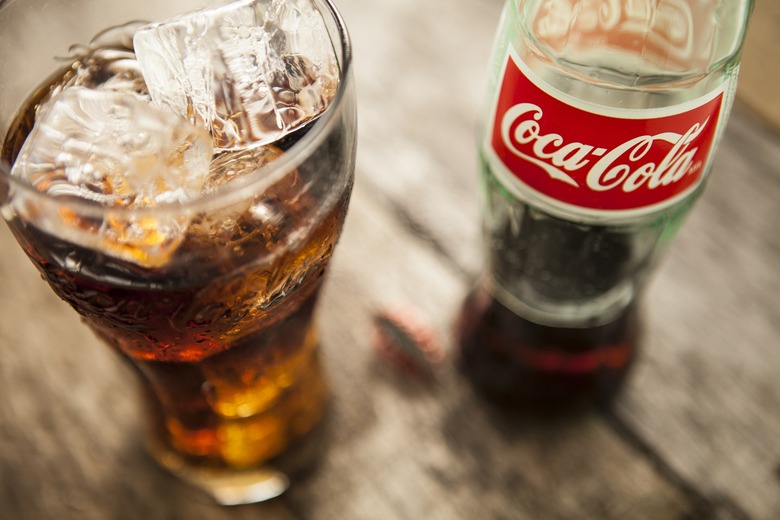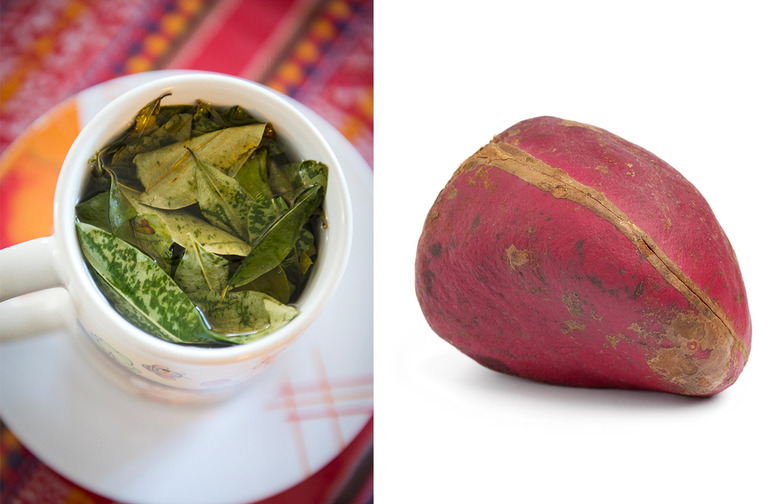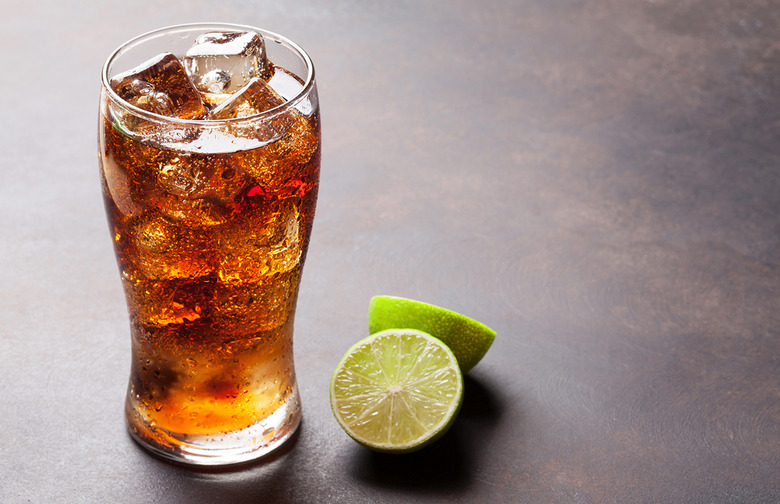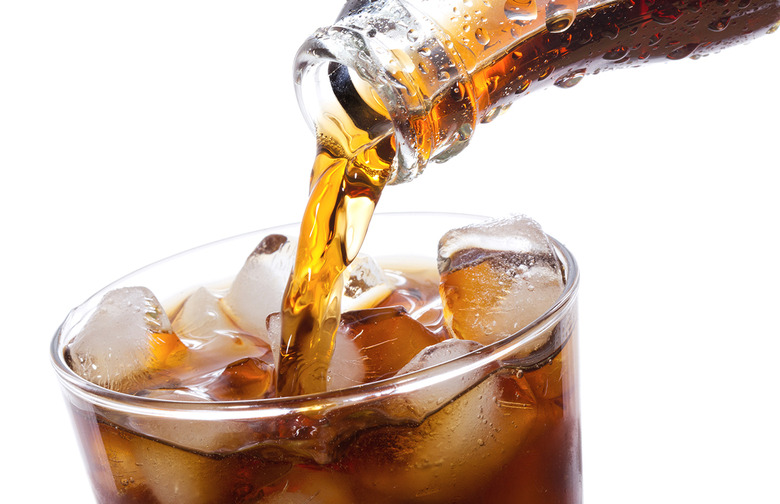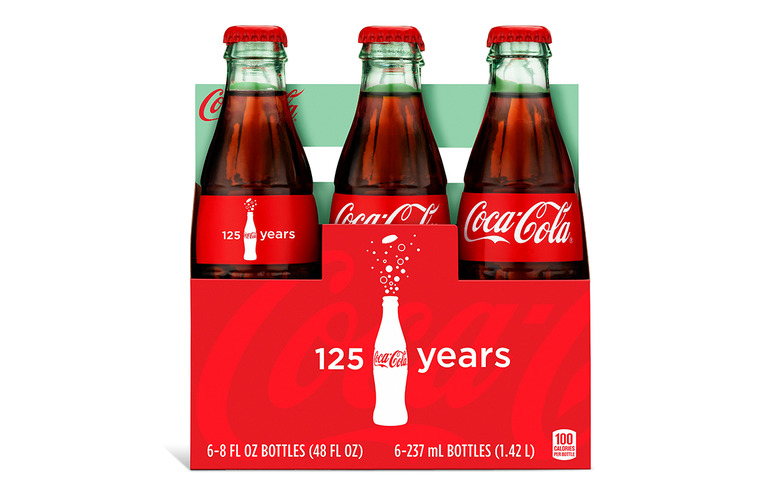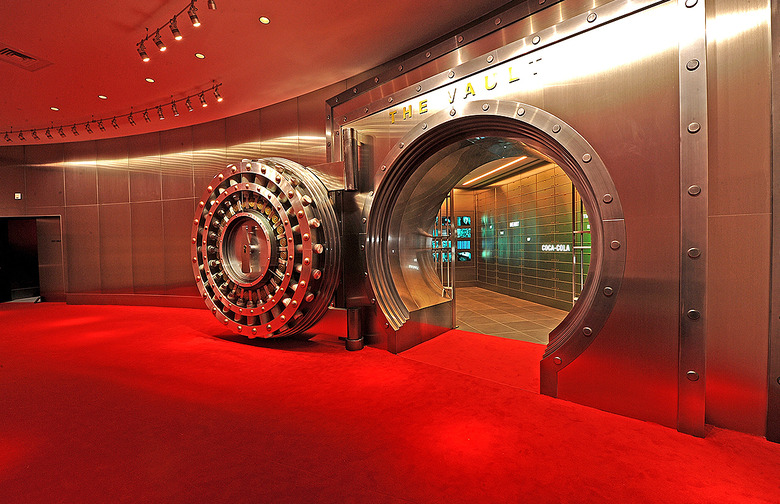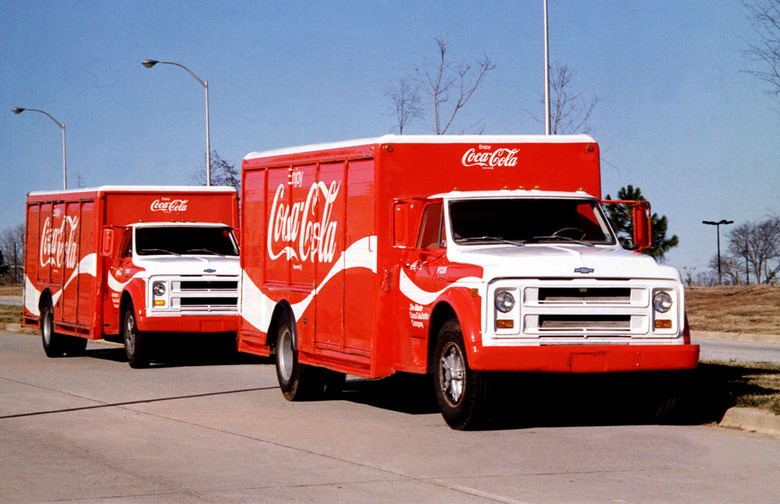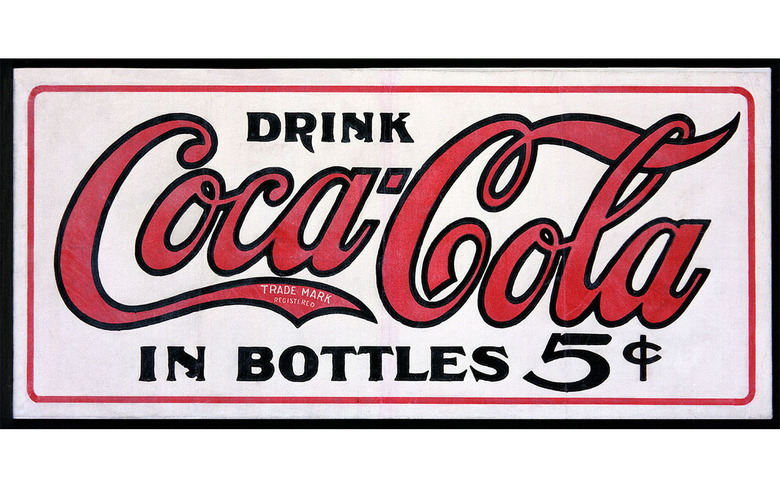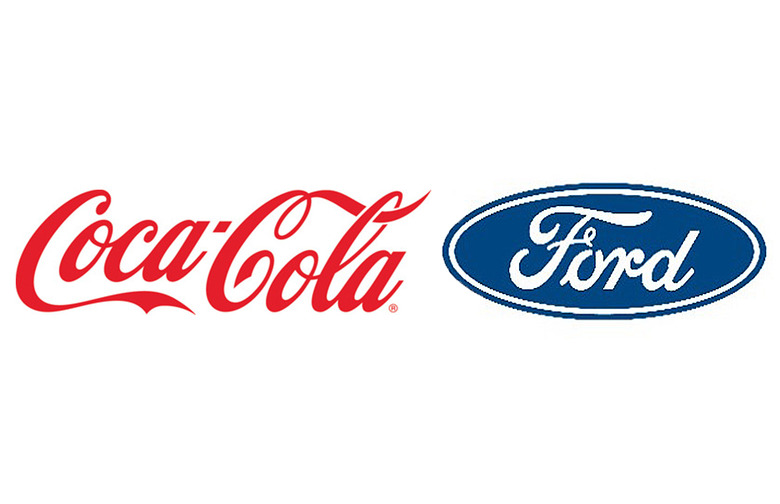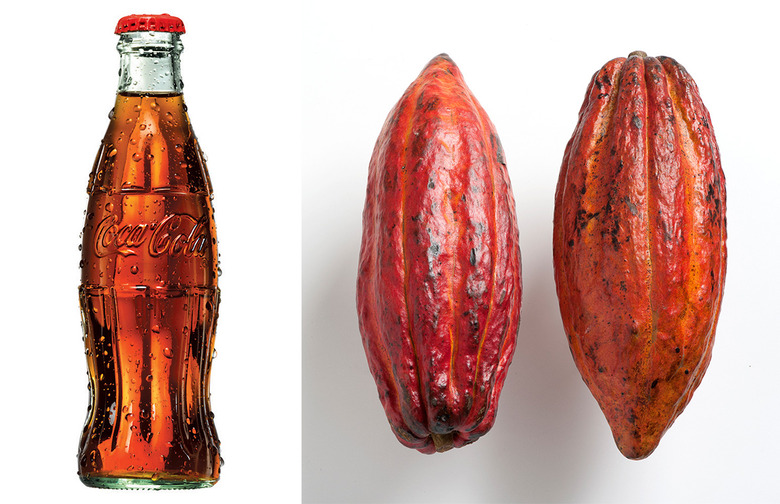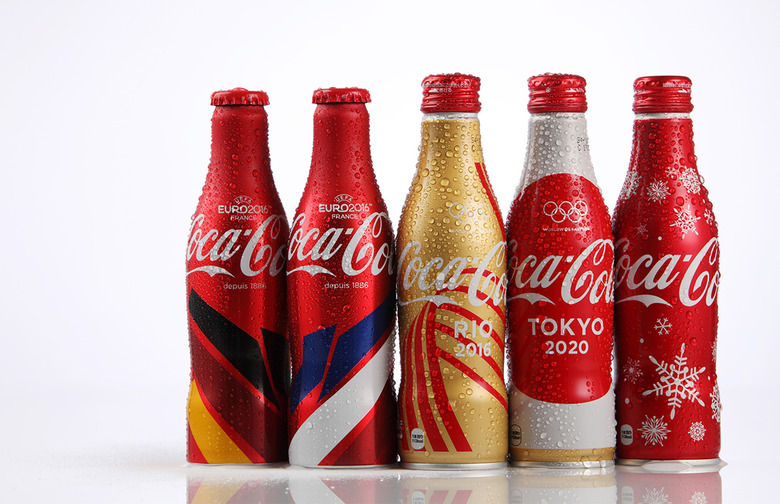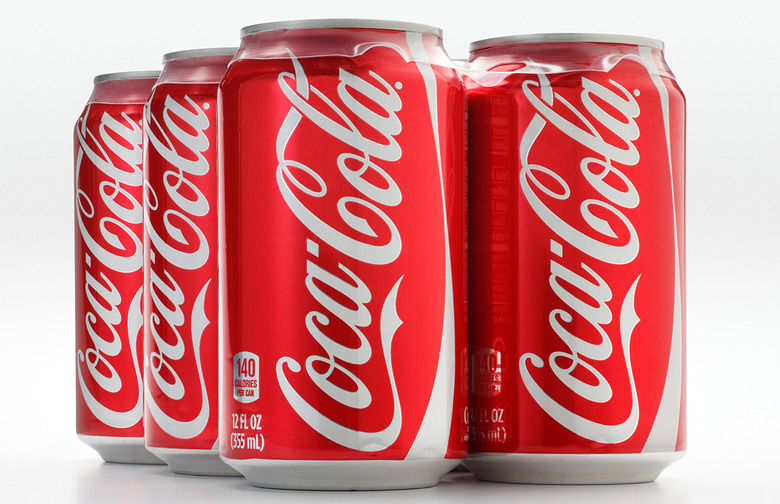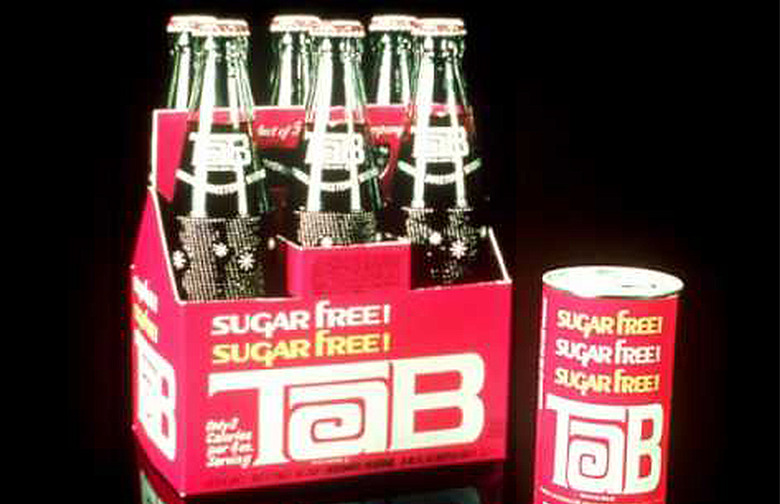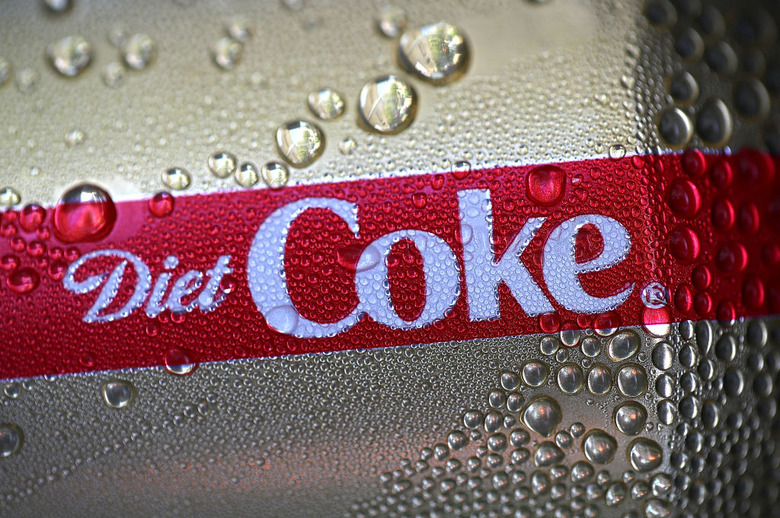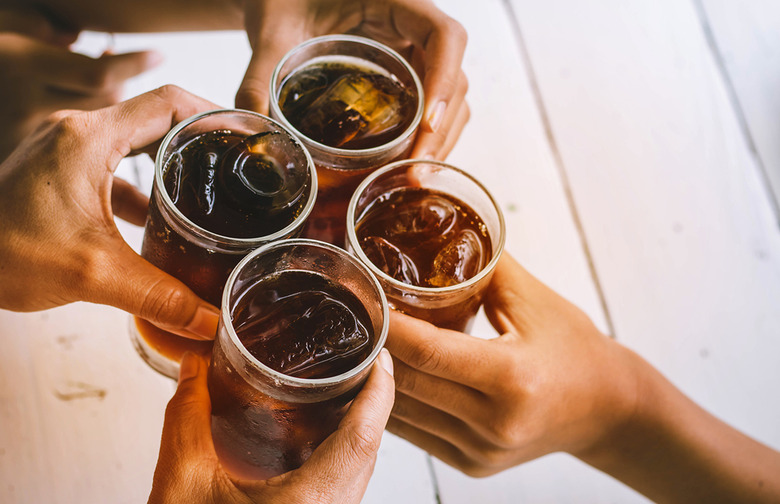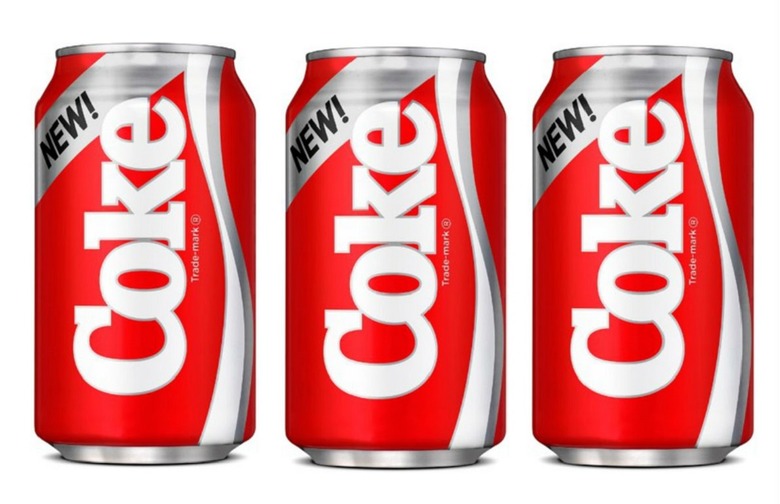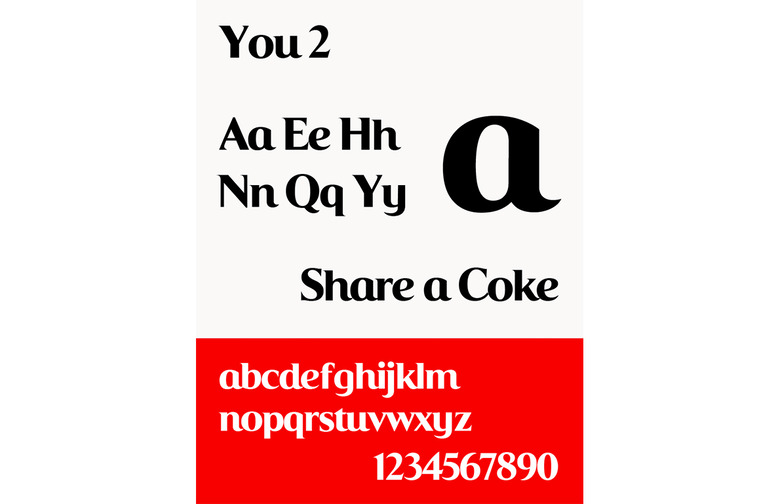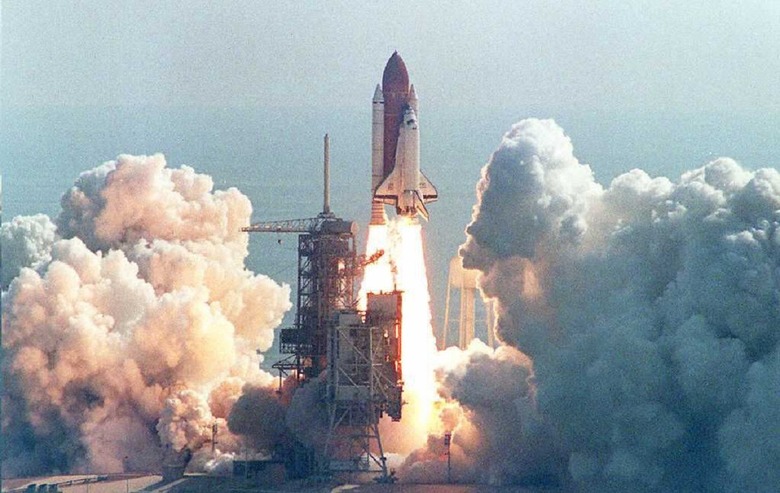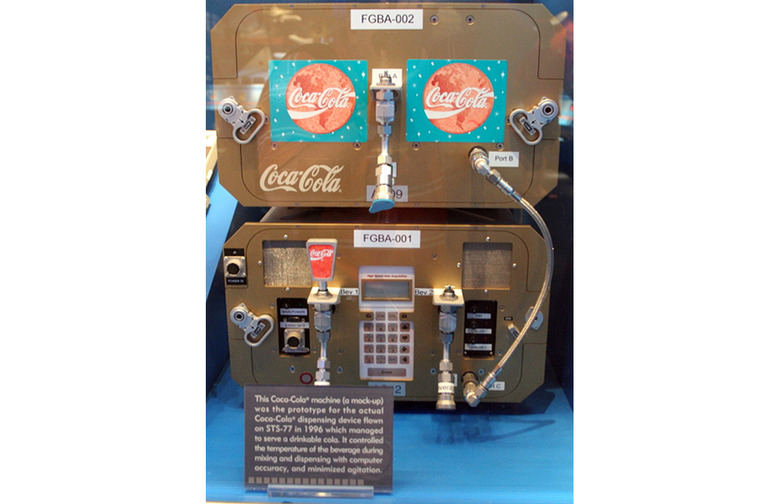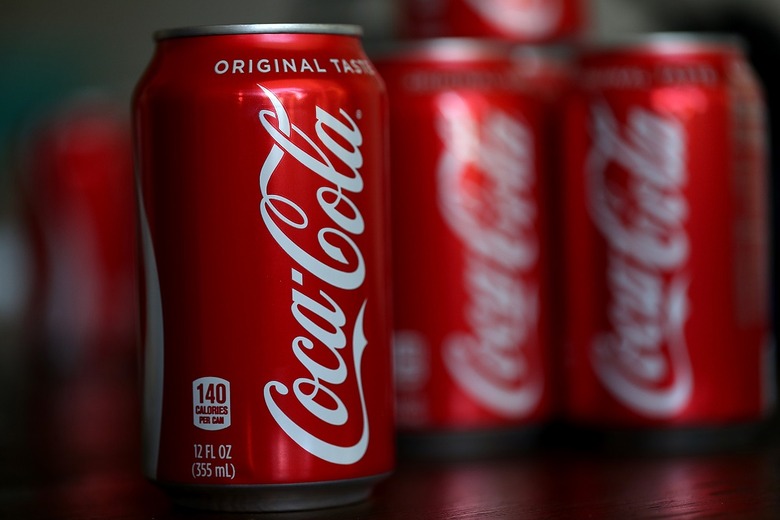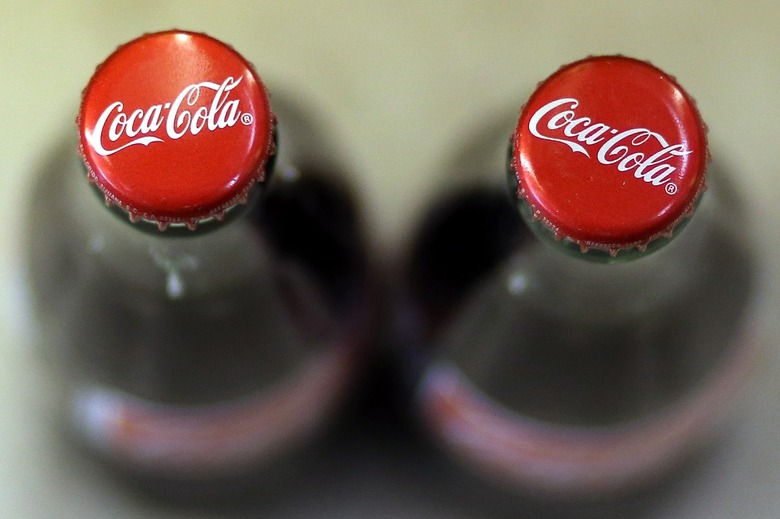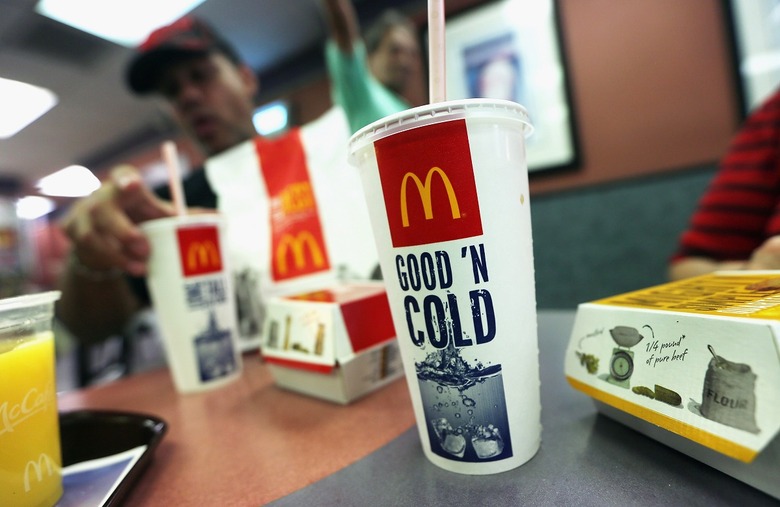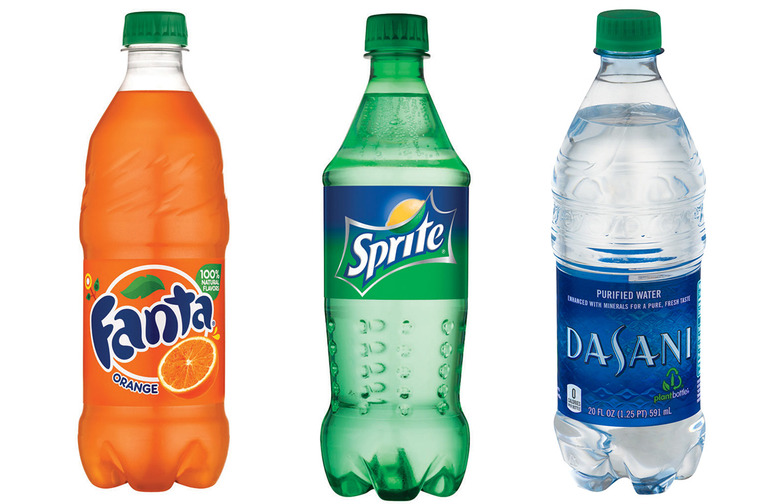25 Things You Didn't Know About Coca-Cola
Coca-Cola is easily one of the most iconic brands in existence today. Its logo is immediately recognizable the world over, just about everyone has drunk it at some point or another, and it has millions, if not billions of fans all around the globe. But even if a day rarely passes without you getting your Diet Coke fix, we bet that there's a lot you don't know about this legendary beverage.
The basic origin story of Coca-Cola is fairly common knowledge by this point: It was invented as a patent medicine by an Atlanta pharmacist named John Pemberton, and once contained actual cocaine. But most people's knowledge stops there; they don't know, for example, that Pemberton died less than two years after inventing the drink, and shortly before his death, sick and in debt, he sold the rights to the formula to a businessman named Asa Candler. It was Candler who founded the Coca-Cola Company and turned the drink into the phenomenon it is today due to aggressive and trailblazing marketing and advertising tactics, and it made him incredibly wealthy.
Coca-Cola has had a lot of ups and downs over the years (punctuated by ongoing "cola wars" between it and Pepsi), and as each generation comes of age, the company always seems to find a creative way to market Coke to them; from "It's the Real Thing" for the boomers to "Share a Coke" for millennials, the Coke folks keep the product fresh and relevant, without changing its core formula (because we all know how that went last time).
So let's raise a glass of that sweet, brown, fizzy soft drink, and learn all about the long, strange trip Coke's been on.
Dan Myers and Taylor Rock contributed to this article.
It was created as an alternative to morphine
After being wounded in the Civil War, former Confederate Colonel John Pemberton developed an addiction to morphine. He set out in search of an opium-free substitute, and the end result, which he developed at his drugstore in Columbus, Georgia, served as the prototype for Coca-Cola's recipe; he called it a "brain tonic and intellectual beverage."
Its name was derived from 2 key ingredients
The name Coca-Cola is derived from two primary ingredients: the coca leaf and the kola nut. Extract of the coca leaf was essentially cocaine, and the kola nut provided caffeine.
It was originally alcoholic
Pemberton's original Coca-Cola formula, registered in 1885, added a third intoxicant to the party: alcohol. Coca-Cola was originally developed as a coca wine, which was first created in France in the 1860s; the leading brand, Vin Mariani, was a mixture of cocaine and wine, and counted Queen Victoria, Thomas Edison and Ulysses S. Grant among its fans.
It originally contained 9 milligrams of cocaine per glass
The wine was removed from the formula after Atlanta passed prohibition legislation in 1886, leaving just the coca and kola. In Pemberton's original recipe, he called for 5 ounces of coca leaf per gallon of syrup, making it a serious intoxicant. Before the cocaine was phased out beginning in 1903, it was estimated that each glass of Coke contained about 9 milligrams of cocaine; by comparison, the average line of cocaine equals about 50 milligrams. So drinking a glass of cocaine-laced Coke wouldn't have necessarily turned you into Rick James, but you'd have certainly felt a little pep in your step.
It still contains coca leaf extract
In 1988, the New York Times discovered that Coca-Cola still contained non-narcotic coca leaf extract produced by the Stepan Company, the nation's only legal commercial importer of coca leaves. "Ingredients from the coca leaf are used, but there is no cocaine in it and it is all tightly overseen by regulatory authorities," a Coca-Cola spokesperson confirmed to the paper. No word on whether it still contains kola nuts, but we wouldn't be too surprised.
The formula is locked in a vault
Just like Colonel Sanders' 11 herbs and spices, the exact formula for modern Coca-Cola is locked away in a vault; you can visit it at Atlanta's World of Coca-Cola. Only two employees know the true formula, and they're not allowed to travel together.
Several old recipes are available
Just because the formula is locked in a vault doesn't mean that alternate recipes aren't floating around out there; one was written down by John Pemberton himself shortly before his sudden death in 1888. All of those existing unofficial recipes share a common thread, however: they reveal that Coca-Cola's primary flavoring comes from orange, cinnamon, lemon, coriander, nutmeg, neroli (bitter orange blossom) and possibly lime and vanilla. Try to pick out those flavors the next time you have a Coke.
It stayed the same price from 1886 to 1959
From the time it was first released up through the Atomic Age, the price of a glass of Coke stayed constant, at five cents a pop. When you think about everything the country went through during those years, it's a pretty amazing feat.
The logo was modeled after formal handwriting
If you were around in the late 1880s and saw Coke's logo for the first time, you would have immediately recognized the writing style: Called Spencerian script, it was the primary form of formal handwriting (for invitations, business correspondence, formal letters, etc.) of the era, before the typewriter came along, and was taught to most children. It was in common use from around 1850 to 1925, and can also be found in the Ford Motor Company's logo.
The bottle was modeled after the cocoa pod
In 1915, employees of Indiana's Root Glass Company were tasked with creating an instantly recognizable bottle for Coca-Cola. They wanted to base it on the shape of either the coca leaf or kola nut, but because they didn't know what those looked like and couldn't find any photos or illustrations of them at the local library, they instead went with the cocoa pod for inspiration. This bottle shape, called the contour bottle, became standard in 1920.
It was the first commercial sponsor of the Olympics
Coca-Cola was one of the first food and drink companies to really go all out with advertising and marketing, and sports marketing relationships and corporate sponsorships have long been essential to its strategy. In fact, it's been sponsoring the Olympics since it became the first brand to do so back in 1928.
It wasn’t sold in cans until 1960
In the 1950s, Coke executives decided to get on board with the advances in modern canning technology, and beginning in 1955 they started developing prototype Coke cans for armed forces overseas. The earliest Coke cans are incredibly rare, and are highly collectible.
Its first Diet Cola was Tab
Here's some trivia: What was the first diet drink released by Coca-Cola? It wasn't Diet Coke; it was Tab. Released in 1963 to compete with Royal Crown's Diet Rite, Tab was immensely popular through the 1970s. Coca-Cola was initially reluctant to release a diet soda with "Coca-Cola" in its name (they were afraid it would take market share away from flagship Coke), but after seeing the success of Diet Pepsi, which was released in 1964, they developed Diet Coke (which has a completely different recipe from Coca-Cola) and released it in 1982.
New Coke was based on the recipe for Diet Coke
We all know about New Coke, which was released with much fanfare in 1985 but was met with so much backlash that the company re-released the original formula three months later. But we bet that there are a few things you didn't know about New Coke: One, New Coke was actually smoother, sweeter and less fizzy than classic Coke. Two, New Coke actually beat both Coke and Pepsi in multiple blind taste tests, so its flavor had little to do with its lack of success. And the formula for New Coke didn't come from out of the blue: It was actually just Diet Coke with high fructose corn syrup added instead of aspartame.
New Coke stuck around until 2002
Even though most people think that New Coke was phased out as soon as Coca-Cola Classic was re-introduced, it's not true: In 1992, it was renamed Coke II, and it wasn't entirely phased out until 2002.
New Coke was relaunched 34 years after it flopped
New Coke is considered one of the most epic failures in product history, but Coca-Cola brought it back anyway — same recipe and all. Here's the thing: It tastes so much better than regular Coca-Cola. Unfortunately the relaunch was a limited-time-only thing and fans practically broke Coca-Cola's website trying to buy the product, so you'll just have to take our word for it.
A new typeface was invented for its ‘Share a Coke’ campaign
That unusual typeface used on Coke bottles for its "Share a Coke" campaign, which has been going on for the better part of this decade? It's actually called "You 2," and it was created especially for this campaign.
It’s been proven to help treat gastric phytobezoars
Suffering from an indigestible mass trapped in the digestive system, also known as a gastric phytobezoar? Drink some Coke. The soft drink has been shown to effectively treat the condition.
Coca-Cola was the first soft drink consumed in space
Astronauts first tested the "Coca-Cola Space Can" on board the space shuttle Challenger on July 12, 1985. They were served New Coke. Classic Coke was brought into orbit six years later on August 26, 1991, this time on Soviet space station Mir. Diet Coke became the first diet soft drink in the great beyond on a third trip in February of 1995 on the space shuttle Discovery.
The was a Coke dispenser onboard the space shuttle
Astronauts on board Space Shuttle Discovery in 1995 had a nice amenity: a Coke dispenser. Called a Fluids Generic Bioprocessing Apparatus, this contraption was put aboard the shuttle to see if carbon dioxide, water and syrup could be successfully mixed to form soda in space. The test was a success, and the astronauts were able to enjoy 1.65 liters of both Coke and Diet Coke onboard.
Contrary to popular belief, it won’t dissolve teeth (or flies) overnight
Coke is slightly acidic, so over time it'll break down organic substances, like teeth and flies. However, the myth that Coke's ingredients are so corrosive that it can dissolve a tooth or housefly overnight is nothing but an urban legend.
Coca-Cola is the second most widely understood term in the world
The most widely understood term across all continents is "OK" followed by "Coca-Cola." In 1993, the company began testing a new soft drink called "OK Soda" so that it could own both of the world's most recognized words. Due to unsuccessful trials, the drink was discontinued in 1995 before it was able to reach a nationwide audience.
There’s a rumor that Coca-Cola was invented in Spain
Official records show that John Pemberton created Coca-Cola in Georgia in 1886, but a distillery south of Valencia in Spain has long claimed that the world-famous soda was actually created there. Owner Juan Juan Micó alleges that the recipe, originally called "Kola-Coca," is still locked away in a safe at Destilerías Ayelo.
There’s a reason McDonald’s Coca-Cola tastes the best
The Coca-Cola served at McDonald's tastes exponentially better than the Coca-Cola served in other restaurants, and it's not all in your head. Most places store their syrup in bags, but the syrup for McDonald's Coca-Cola lives in stainless steel containers that protect it from light, air and anything else that could lessen its quality. McDonald's straws are also slightly wider than others, so "all that Coke taste can hit your taste buds."
The Coca-Cola Co. owns hundreds of brands worldwide
The Coca-Cola Co. is one of the beverage industry's largest players, and it owns hundreds of brands around the globe. The majority of Coca-Cola's drinks are only available abroad, but American brands owned by the company include Bacardi Mixers, Barq's, Capri Sun, Dasani, Fairlife, Fanta, Fresca, Full Throttle, Fuze, Smart Water, Vitamin Water, Hi-C, Minute Maid, Nestea, Odwalla, Powerade, Rockstar, Sprite and Zico. In fact, you probably didn't know these things about your 15 of the most popular soda brands.
More from The Daily Meal:
Regional Sodas We Wish Were National
21 Things You Should Never Eat on an Airplane
Most Popular Soda From the Year You Were Born
Surprising Reasons You're Always Craving Sugar
12 Things You Didn't Know About McDonald's
